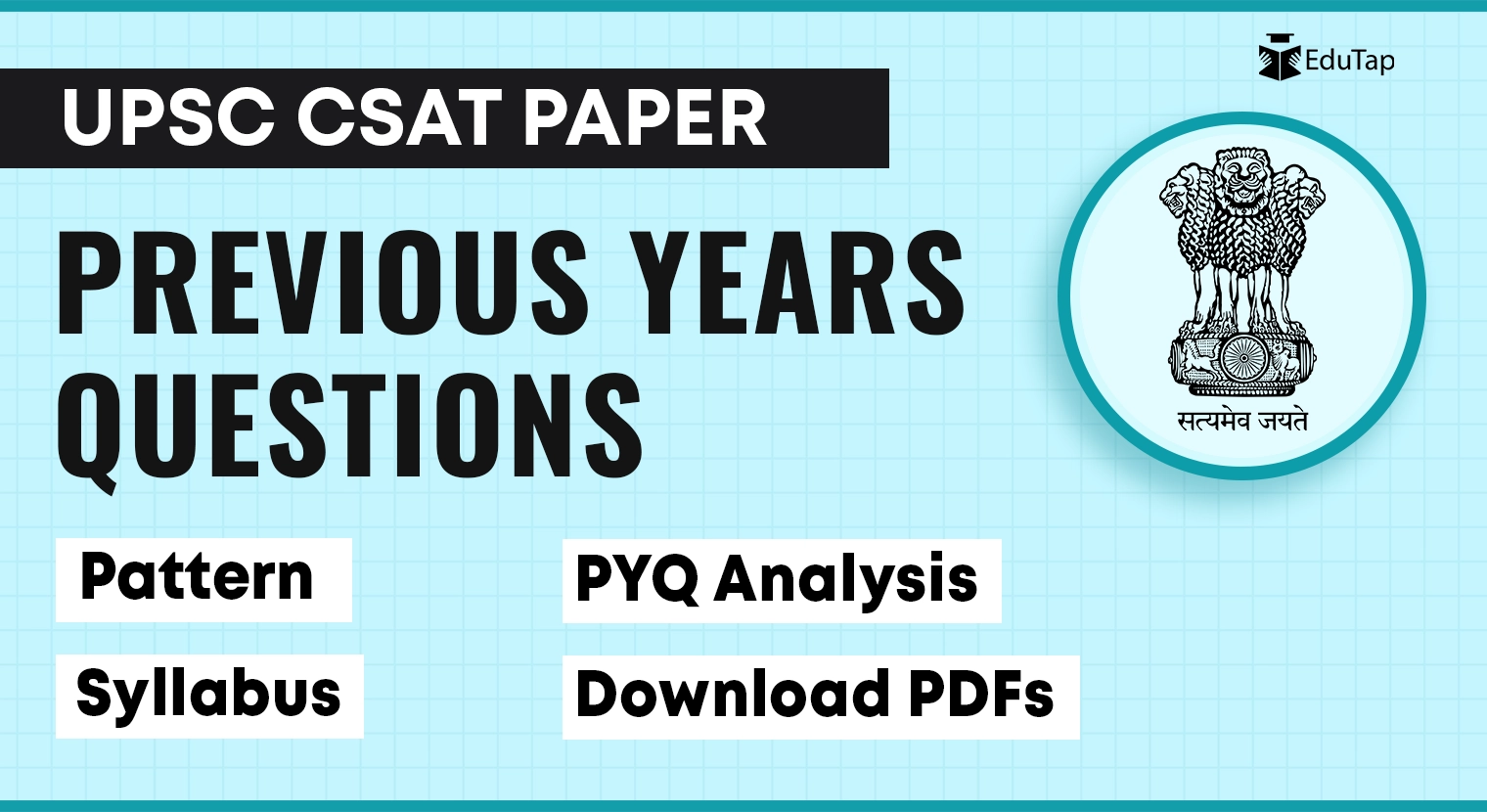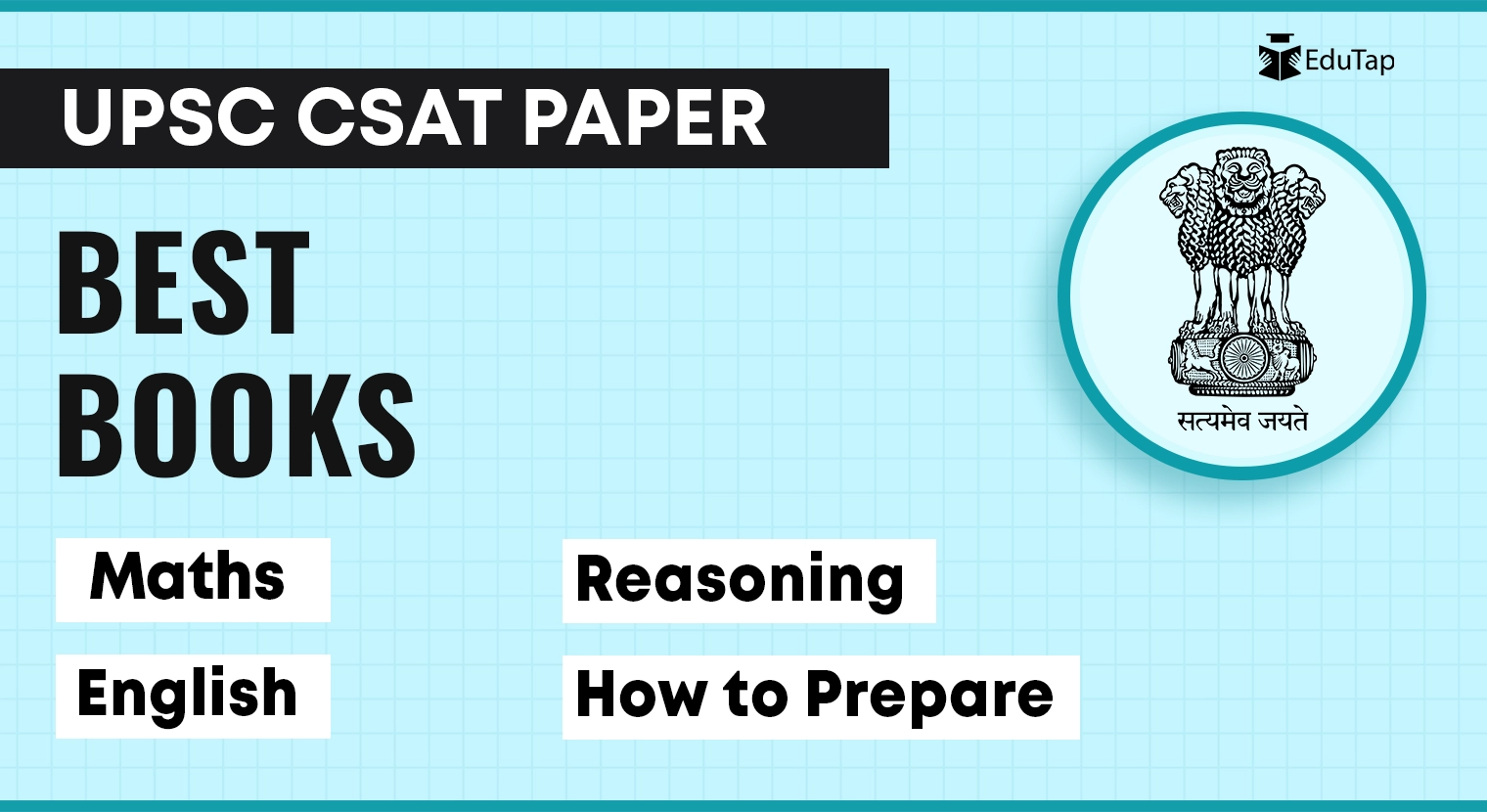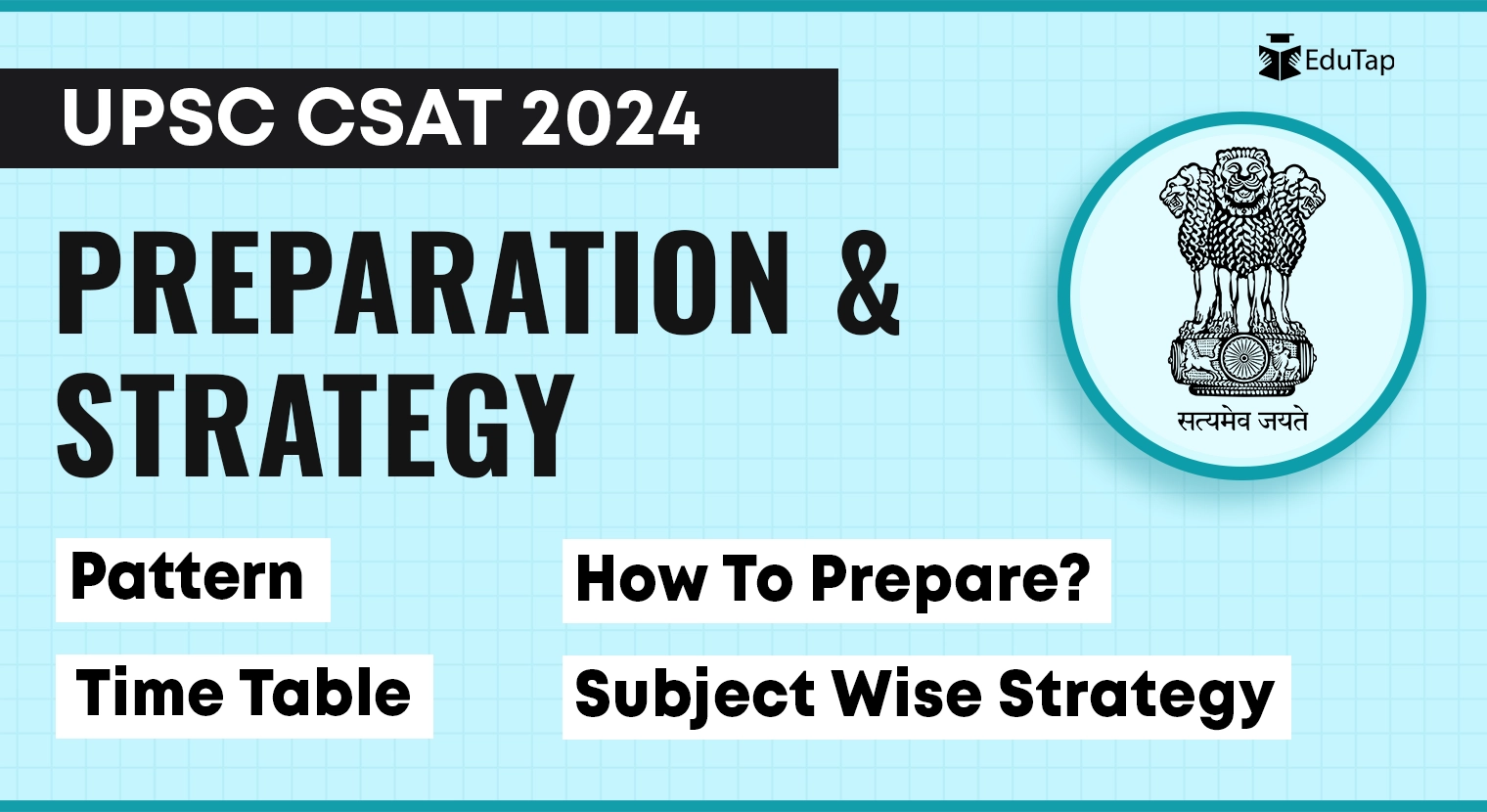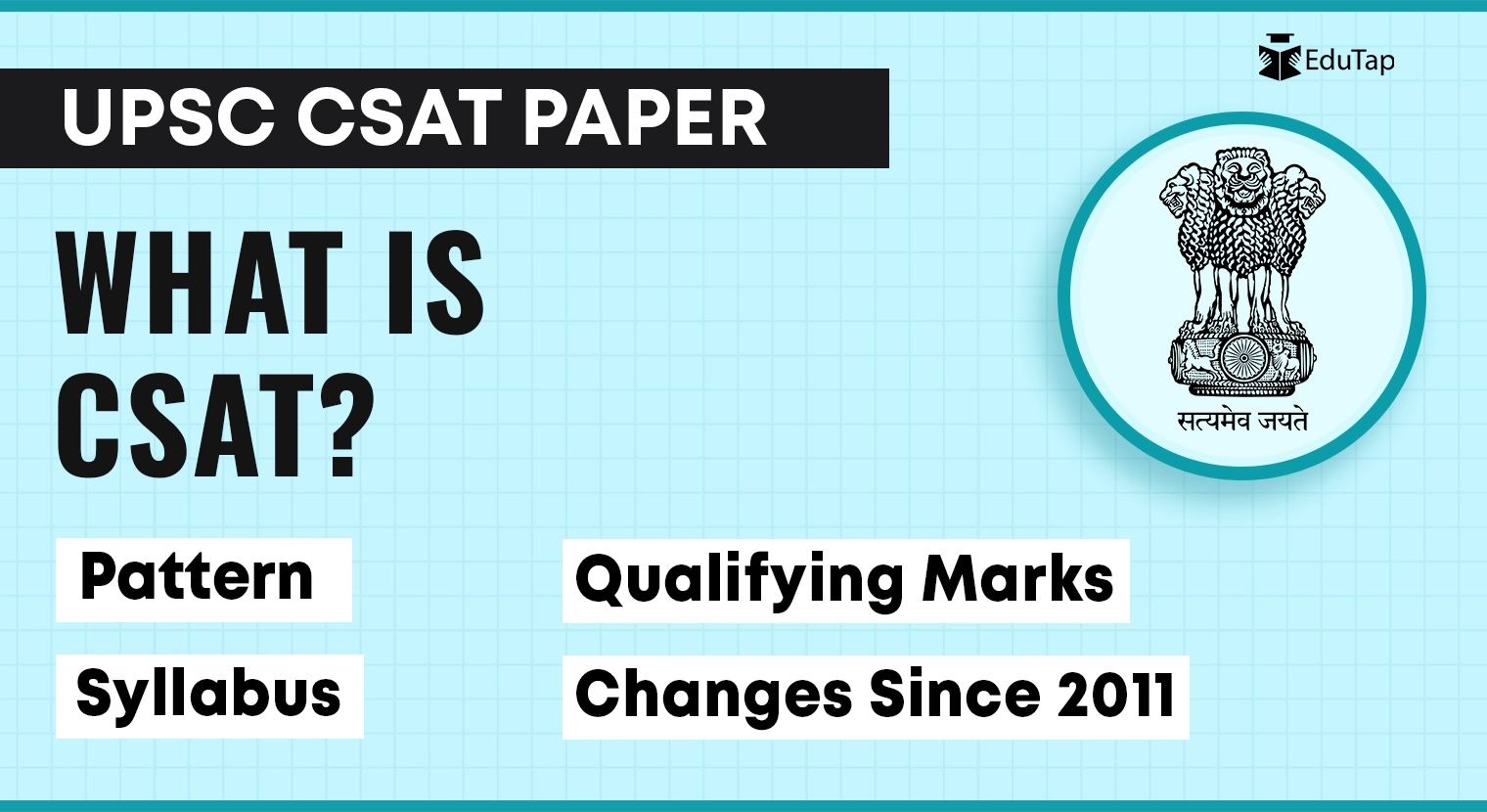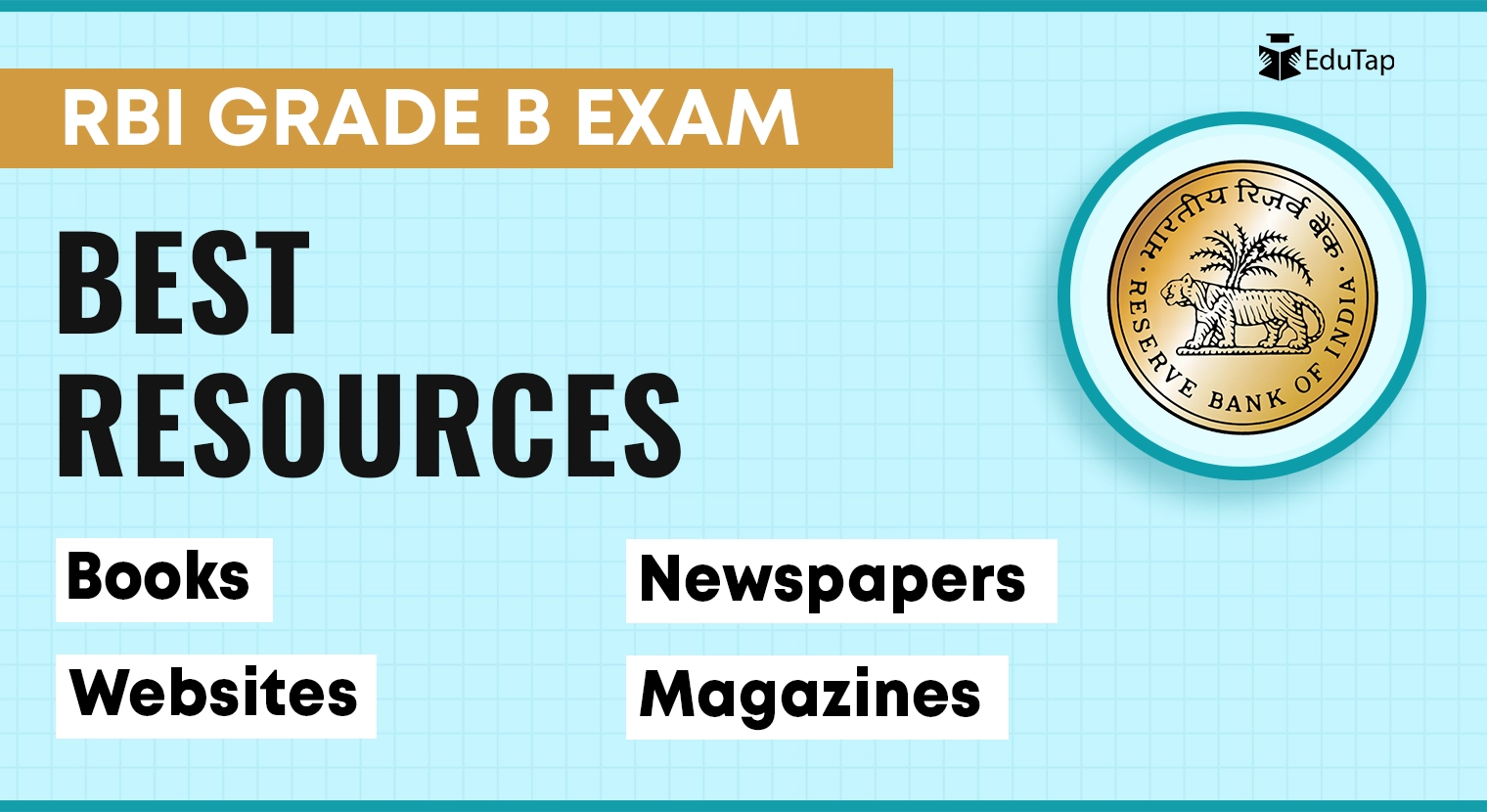The CSAT is a highly competitive paper conducted by the Union Public Service Commission for candidates to join civil services in India. Although CSAT is a qualifying paper, you still need to prepare for it to score at least 66 marks to qualify. One of the most effective ways to prepare is by analysing and understanding the CSAT previous years’ question papers to create your preparation strategy and conquer the first step of your civil services journey.
In this article, you’ll get UPSC CSAT previous years’ question papers with answer keys in PDF format, year-wise trend analysis, difficulty level, and more.
UPSC CSAT Previous Years Question Papers
One of the best ways to ensure success in the UPSC CSAT is to analyse the previous years’ question papers. On analysing these papers, you get an idea about the paper pattern, types of questions, difficulty level, weightage of different topics, and the number of questions asked from each subject over the years.
Solving CSAT previous years’ question papers also helps you understand where you stand and identify your strong and weak subjects and topics. This insight can help you create a customised preparation strategy for the paper effectively.
Here is the list of the UPSC CSAT previous 5 years’ question papers with answer keys in a PDF format:
| UPSC CSAT Previous Years Question Papers with Answer Keys (PDF) | |||
| SNo. | Year-wise CSAT Question Papers | Download Link | Answer Key |
| 1 | UPSC CSAT Question Paper 2023 | Download as PDF | To be released |
| 2 | UPSC CSAT Question Paper 2022 | Download as PDF | 2022 Answer Key |
| 3 | UPSC CSAT Question Paper 2021 | Download as PDF | 2021 Answer Key |
| 4 | UPSC CSAT Question Paper 2020 | Download as PDF | 2020 Answer Key |
| 5 | UPSC CSAT Question Paper 2019 | Download as PDF | 2019 Answer Key |
Now that you have access to the previous years’ question papers and answer keys, it’s time to understand the CSAT pattern and syllabus.
CSAT Exam Pattern
The UPSC CSAT paper comprises a total of 80 questions, with each question carrying 2.5 marks, summing up to 200 marks in total. Candidates are allotted 2 hours to complete the paper. However, there is a negative marking of 1/3rd of a mark, equivalent to 0.83 marks, for each incorrect answer.
To qualify, candidates must secure a minimum of 33%, equivalent to 66 marks. The paper does not have sectional timing; it is conducted in the offline mode, utilising pen and paper. This is an objective-type paper that is available in both English and Hindi languages to cater to candidates’ preferences.
For easy understanding, we have provided the above-mentioned information in a table form.
| UPSC CSAT Pattern | |
| Total Number of Questions | 80 |
| Total Marks | 200 |
| Per Question Marks | 2.5 |
| Total Time | 2 Hours |
| Negative Marking | 1/3rd, i.e. 0.83 marks |
| Qualifying Marks | 33%, i.e. 66 marks |
| Sectional Timing | No |
| Mode of Exam | Offline (Pen and Paper) |
| Paper Type | Objective |
| Paper Language | English and Hindi |
After getting familiar with the CSAT pattern, let’s move on to understand its syllabus.
CSAT Exam Syllabus
The official notification of the UPSC Civil Services Examination specifies the syllabus of the CSAT paper as follows:
- Comprehension
- Interpersonal skills, including communication skills
- Logical reasoning and analytical ability
- Decision-making and problem-solving
- General mental ability
- Basic numeracy (numbers and their relations, orders of magnitude, etc. (Class X level)
- Data interpretation (charts, graphs, tables, data sufficiency, etc. (Class X level)
For easy understanding, the above syllabus can be divided into 3 subjects:
- Maths
- Reasoning
- English
| Subject | Syllabus as per UPSC notification |
| Maths | General mental ability Basic numeracy (numbers and their relations, orders of magnitude, etc. (Class X level) Data interpretation (charts, graphs, tables, data sufficiency, etc. (Class X level) |
| Reasoning | Logical reasoning and analytical ability |
| English | Comprehension |
Important Note:
We have deliberately not listed “Decision Making and Problem Solving” and Interpersonal skills, including communication skills, in the above table, as no question on these topics has been asked since 2014.
This is an overall view of the CSAT syllabus. Below, we have explained the detailed subject-wise syllabus of the CSAT paper.
Maths Syllabus for UPSC CSAT
Here is the detailed maths syllabus for the UPSC CSAT:
- Number System
- HCF and LCM
- Percentage
- Profit and Loss
- Simple Interest
- Compound Interest
- Ratio and Proportion
- Age and Partnership
- Data Interpretation
- Time and Work
- Pipes and Cistern
- Time, Speed and Distance
- Boats and Stream
- Average
- Alligation and Mixture
- Mensuration 2D and 3D
- Permutation and Combination
- Probability
- Number Series
Reasoning Syllabus for UPSC CSAT
Here is the detailed reasoning syllabus for the UPSC CSAT:
- Syllogism
- Blood Relation
- Direction Sense
- Alphabetical and Alphanumeric Series
- Coding and Decoding
- Analogy
- Calendar
- Clock
- Counting Figure
- Cube and Cuboid
- Dice
- Continuous Letter Series
- Ranking and Order
- Arrangement and Puzzle
English Syllabus for UPSC CSAT
Here is the detailed English syllabus for the UPSC CSAT:
- Reading Comprehension
- Assumption
- Inference
- Conclusion
Now that you have understood the CSAT syllabus, let’s look at the books with solved CSAT previous years’ question papers.
CSAT Previous Year Solved Papers Books
Below are the previous years’ question papers books with solutions and practice sets:
- Cracking The CSAT (Civil Services Aptitude Test) Paper-2 by Arihant
Book Highlights:
- The book includes a wide array of previously solved papers offering aspirants an opportunity to understand the question pattern, important topics, and difficulty levels over the years.
- The book offers detailed solutions and explanations for each solved paper, enabling a clear understanding of the problem-solving approaches and techniques.
- 5 crack sets have been given at the end of the book for practice.
- Crack UPSC CSAT Civil Services Aptitude Test IAS Prelims Paper 2 by Disha
Book Highlights:
- This book also covers detailed theory of all the important topics with solved examples.
- The 3000+ MCQs with detailed solutions help you practise the different difficulty-level questions.
- The book provides 5 mock tests with solutions to replicate the CSAT paper environment, allowing you to manage time effectively during the actual paper.
| CSAT Previous Year Solved Solved Papers Books | ||||
| SNo. | Books | Author | Publisher | Buy Here |
| 1 | Cracking The CSAT (Civil Services Aptitude Test) Paper-2 | Arihant Experts | Arihant Publications | Buy Online |
| 2 | Crack UPSC CSAT Civil Services Aptitude Test IAS Prelims Paper 2 | Disha Experts | Disha Publication | Buy Online |
Other Recommended Sources
- Maths: Quantitative Aptitude for Competitive Examinations by R.S. Agarwal (Buy Here)
- Reasoning: A Modern Approach to Verbal & Non-Verbal Reasoning by R.S. Agarwal (Buy Here)
- English: CSAT Paper II: Reading Comprehension 6th Edition by Ashok Kumar Singh & Nagendra Pratap (Buy Here)
- Free Videos: YouTube Videos
- Online Course: EduTap Comprehensive Course
Now that you have understood what books to read, it’s time to understand the CSAT PYQs analysis to identify the most important topics to prepare for the paper.

UPSC CSAT Previous Years Question Papers Analysis
Analysing the UPSC CSAT previous years’ question papers provides insights into the difficulty level, topic-wise weightage, and performance trends.
Below, we have explained the subject-wise trend analysis for the UPSC CSAT from the previous 10 years’ papers, allowing you to understand how the question paper was designed in these years.
Here is the subject-wise trend analysis:
| Subject-Wise Trend Analysis | ||||||||||
| No. of Questions Asked in Previous 10 Year UPSC CSAT Papers | ||||||||||
| Subject | 2023 | 2022 | 2021 | 2020 | 2019 | 2018 | 2017 | 2016 | 2015 | 2014 |
| Maths | 43 | 38 | 36 | 45 | 32 | 35 | 25 | 30 | 28 | 24 |
| Reasoning | 11 | 15 | 17 | 10 | 18 | 20 | 25 | 22 | 22 | 24 |
| English | 26 | 27 | 27 | 25 | 30 | 25 | 30 | 28 | 30 | 32 |
| Total | 80 | 80 | 80 | 80 | 80 | 80 | 80 | 80 | 80 | 80 |
For your easy understanding, we have analysed the year-wise and topic-wise distribution of the number of questions asked from each subject from the past 10 years UPSC CSAT papers.
Maths PYQs Analysis
We have analysed the year-wise trend of the number of questions asked from each topic of maths from 2014 to 2023 to identify the most important topics.
| Topic-Wise Yearly Distribution of Maths Questions | ||||||||||
| Topic | 2023 | 2022 | 2021 | 2020 | 2019 | 2018 | 2017 | 2016 | 2015 | 2014 |
| Percentage | 1 | 4 | 7 | 2 | 9 | 2 | 3 | 3 | 6 | 6 |
| Ratio and Proportion | 0 | 1 | 4 | 2 | 2 | 0 | 3 | 4 | 6 | 3 |
| Profit and Loss | 0 | 1 | 1 | 2 | 3 | 3 | 1 | 1 | 0 | 1 |
| Compound Interest | 1 | 0 | 0 | 0 | 0 | 0 | 0 | 0 | 0 | 1 |
| Data Interpretation | 0 | 0 | 0 | 1 | 0 | 14 | 0 | 0 | 3 | 5 |
| Ages & Partnership | 1 | 1 | 1 | 0 | 2 | 0 | 1 | 1 | 1 | 0 |
| Time & Work | 1 | 1 | 1 | 1 | 0 | 0 | 1 | 2 | 0 | 0 |
| Time, Speed, and Distance | 0 | 2 | 1 | 2 | 1 | 3 | 2 | 3 | 2 | 3 |
| Pipes & Cistern | 0 | 0 | 1 | 0 | 0 | 0 | 0 | 0 | 1 | 0 |
| Boats & Stream | 0 | 0 | 0 | 1 | 0 | 0 | 0 | 1 | 0 | 0 |
| Probability | 1 | 0 | 0 | 0 | 0 | 1 | 2 | 1 | 0 | 0 |
| P&C | 11 | 7 | 3 | 3 | 2 | 2 | 3 | 1 | 6 | 1 |
| Alligation Mixture | 0 | 1 | 1 | 3 | 0 | 0 | 0 | 0 | 0 | 0 |
| Number System | 22 | 15 | 13 | 18 | 8 | 5 | 6 | 5 | 1 | 1 |
| Average | 0 | 1 | 3 | 3 | 2 | 0 | 3 | 2 | 0 | 0 |
| Mensuration 2D, 3D | 2 | 1 | 0 | 3 | 0 | 2 | 1 | 3 | 0 | 0 |
| HCF & LCM | 1 | 1 | 0 | 3 | 0 | 0 | 0 | 3 | 0 | 2 |
| Number Series | 2 | 2 | 3 | 1 | 3 | 4 | 0 | 0 | 2 | 1 |
| Total | 43 | 38 | 36 | 45 | 32 | 35 | 25 | 30 | 28 | 24 |
Most Important Topics for CSAT Maths
The most important topics for CSAT maths that can be identified from the above table are as follows:
- Number System
- HCF and LCM
- Percentage
- Profit and Loss
- Ratio and Proportion
- Age and Partnership
- Time and Work
- Time, Speed and Distance
- Average
- Mensuration 2D and 3D
- Permutation and Combination
- Probability
- Number Series
Other Key Takeaways
The above table shows that the weightage of maths questions has steadily increased over the years. From 24 out of 80 questions in 2014, the number of questions asked from maths in 2023 went up to 43. This means that more than 50% of the paper comprises maths questions, and an aspirant must prepare accordingly.
Reasoning PYQs Analysis
We have analysed the year-wise trend of the number of questions asked from each topic of reasoning from 2014 to 2023 to identify the most important topics.
| Topic-Wise Yearly Distribution of Reasoning Questions | ||||||||||
| Topic | 2023 | 2022 | 2021 | 2020 | 2019 | 2018 | 2017 | 2016 | 2015 | 2014 |
| Alphanumeric Series | 2 | 2 | 1 | 0 | 1 | 0 | 0 | 0 | 0 | 0 |
| Coding & Decoding | 1 | 0 | 1 | 1 | 0 | 2 | 1 | 0 | 0 | 0 |
| Continues Letter Series | 1 | 0 | 1 | 1 | 1 | 0 | 0 | 0 | 0 | 0 |
| Analogy | 0 | 0 | 1 | 1 | 0 | 2 | 0 | 0 | 0 | 0 |
| Direction Sense | 0 | 1 | 2 | 1 | 2 | 0 | 0 | 3 | 1 | 2 |
| Blood Relation | 1 | 2 | 0 | 1 | 1 | 0 | 2 | 5 | 1 | 3 |
| Ranking & Order | 2 | 1 | 2 | 3 | 5 | 1 | 3 | 1 | 2 | 2 |
| Syllogism | 0 | 2 | 3 | 1 | 1 | 0 | 1 | 0 | 0 | 0 |
| Sitting Arrangement + Puzzle | 0 | 3 | 1 | 0 | 0 | 8 | 11 | 8 | 8 | 6 |
| Clock | 0 | 3 | 2 | 0 | 1 | 0 | 2 | 1 | 1 | 2 |
| Calendar | 1 | 1 | 3 | 1 | 3 | 0 | 0 | 0 | 0 | 0 |
| Dice | 0 | 0 | 0 | 0 | 0 | 3 | 0 | 0 | 1 | 0 |
| Counting Figure | 0 | 0 | 0 | 0 | 0 | 1 | 0 | 0 | 0 | 0 |
| Cube & Cuboid | 1 | 0 | 0 | 0 | 3 | 1 | 1 | 1 | 0 | 0 |
| Images | 0 | 0 | 0 | 0 | 0 | 2 | 0 | 0 | 2 | 5 |
| Analytical Reasoning | 2 | 0 | 0 | 0 | 0 | 0 | 4 | 3 | 8 | 4 |
| Total | 11 | 15 | 17 | 10 | 18 | 20 | 25 | 22 | 22 | 24 |
Most Important Topics for CSAT Reasoning
The most important topics for CSAT reasoning that can be identified from the above table are as follows:
- Syllogism
- Blood Relation
- Direction Sense
- Alphabetical and Alphanumeric Series
- Coding and Decoding
- Calendar
- Clock
- Continuous Letter Series
- Ranking and Order
Other Key Takeaways
The above table shows that the weightage of reasoning questions has steadily decreased over the years. From 24 out of 80 questions in 2014, the number of questions asked from reasoning in 2023 went down to just 11.
English PYQs Analysis
We have analysed the year-wise trend of the number of questions asked from each level of passage of English Comprehension from 2014 to 2023, and the data is presented in the table below.
Kindly note that level 1 passages are the ones that consist of only 1 question. Level 2, Level 3, and Level 4 passages consist of 2,3 and 4 questions, respectively.
| Topic-Wise Yearly Distribution of English Questions | ||||||||||
| Passage level | 2023 | 2022 | 2021 | 2020 | 2019 | 2018 | 2017 | 2016 | 2015 | 2014 |
| Level 1 Passage | 22 | 6 | 25 | 15 | 18 | 14 | 28 | 14 | 19 | 0 |
| Level 2 Passage | 4 | 12 | 2 | 10 | 12 | 4 | 2 | 2 | 4 | 6 |
| Level 3 Passage | 0 | 9 | 0 | 0 | 0 | 3 | 0 | 0 | 3 | 6 |
| Level 4 Passage | 0 | 0 | 0 | 0 | 0 | 4 | 0 | 3 | 4 | 20 |
| Total | 26 | 27 | 27 | 25 | 30 | 25 | 30 | 28 | 30 | 32 |
Most Important Topics for CSAT English
The most important topics for CSAT English that can be identified from the above table are as follows:
- Reading Comprehension
- Assumption
- Inference
- Conclusion
Other Key Takeaways
The weightage of English comprehension questions has varied from 25 to 32. An aspirant can attempt about 60-70% of these questions with 100% accuracy.
Now that you have a list of the most important topics from each subject, let’s understand the difficulty level of the questions asked in previous years.
UPSC CSAT Difficulty Level
The UPSC CSAT previous years’ question paper has shown various difficulty levels. Some questions were of easy to moderate difficulty, while others were challenging and required in-depth analytical skills.
We have provided below the subject-wise difficulty level of the questions asked in the previous years:
UPSC CSAT Math Difficulty Level
The table below contains the year-wise distribution of easy, moderate, and difficult questions out of the total number of maths questions from 2014 to 2023.
| Maths Difficulty Level | |||||||||||
| 2023 | 2022 | 2021 | 2020 | 2019 | 2018 | 2017 | 2016 | 2015 | 2014 | ||
| Total Questions | 43 | 38 | 36 | 45 | 32 | 35 | 25 | 30 | 28 | 24 | |
| Difficulty Level | Easy | 8 | 13 | 15 | 17 | 14 | 10 | 10 | 13 | 9 | 11 |
| Moderate | 21 | 16 | 9 | 18 | 13 | 11 | 12 | 10 | 11 | 9 | |
| Difficult | 14 | 9 | 12 | 10 | 5 | 14 | 3 | 7 | 8 | 4 | |
Key Takeaways
- Identifying easy and moderate questions is an essential skill to qualify the CSAT, as these questions constitute more than 50% of the questions asked in maths.
- Moreover, with maths’ weightage increasing compared to reasoning and English, the absolute number of difficult questions asked in maths has also increased from 4 in 2014 to 14 in 2023.
UPSC CSAT Reasoning Difficulty Level
The below chart contains the year-wise distribution of easy, moderate and difficult questions out of the total number of reasoning questions from 2014 to 2023
| Reasoning Difficulty Level | |||||||||||
| 2023 | 2022 | 2021 | 2020 | 2019 | 2018 | 2017 | 2016 | 2015 | 2014 | ||
| Total Questions | 11 | 15 | 17 | 10 | 18 | 20 | 25 | 22 | 22 | 24 | |
| Difficulty Level | Easy | 4 | 5 | 9 | 5 | 6 | 7 | 8 | 15 | 8 | 12 |
| Moderate | 3 | 8 | 6 | 5 | 10 | 13 | 8 | 7 | 12 | 8 | |
| Difficult | 4 | 2 | 2 | 0 | 2 | 0 | 9 | 0 | 2 | 4 | |
Key Takeaways
Most of the questions from reasoning fall under the easy to moderate category of difficulty level. This is a positive inference for the aspirants who need not prepare difficulty-level questions for this subject.
UPSC CSAT English Difficulty Level
The chart below contains the year-wise distribution of easy, moderate and difficult questions out of the total number of English comprehension questions from 2014 to 2023.
| English Difficulty Level | |||||||||||
| 2023 | 2022 | 2021 | 2020 | 2019 | 2018 | 2017 | 2016 | 2015 | 2014 | ||
| Total Questions | 26 | 27 | 27 | 25 | 30 | 25 | 30 | 28 | 30 | 32 | |
| Difficulty Level | Easy | 10 | 7 | 12 | 8 | 10 | 9 | 10 | 8 | 11 | 11 |
| Moderate | 8 | 8 | 9 | 12 | 12 | 8 | 12 | 11 | 11 | 12 | |
| Difficult | 8 | 12 | 6 | 5 | 8 | 8 | 8 | 9 | 8 | 9 | |
Key Takeaways
- Level 1 passages (containing 1 question) are usually easier, and these can be attempted with 80-90% accuracy.
- Level 4 passages (containing 4 questions) should be targeted first as more questions can be attempted after reading the comprehension.

Conclusion
In conclusion, analysing the CSAT previous years’ question papers is a strategic move for UPSC aspirants to gain valuable insights into the paper’s evolving nature. It allows you to understand trends, question patterns, important topics, and difficulty levels of questions asked in the paper. Understanding these PYQs allows you to refine your preparation strategies, identify strong and weak areas, and build confidence.
FAQs
CSAT previous years’ question papers provide insights into the exam trends, helping you prioritise topics based on their recurrence. Analysing these questions and their solutions can refine your problem-solving techniques, time-management skills, and overall exam strategy.
While solving previous years’ question papers is beneficial, it’s not a guarantee of success. Success in the UPSC exam demands a holistic approach involving comprehensive study, practice, mock tests, and consistent efforts to improve your understanding of various subjects.
Yes, there are coaching institutes that offer specialised online CSAT preparation programs to help candidates excel in this paper. Online CSAT coaching offers flexibility, accessibility, and personalised learning, allowing candidates to study at their own pace, access quality study materials, engage with interactive content and receive guidance from experienced mentors.
There is no strict order. However, starting with the sections you are most comfortable with is recommended to gain confidence before moving to more challenging areas.
